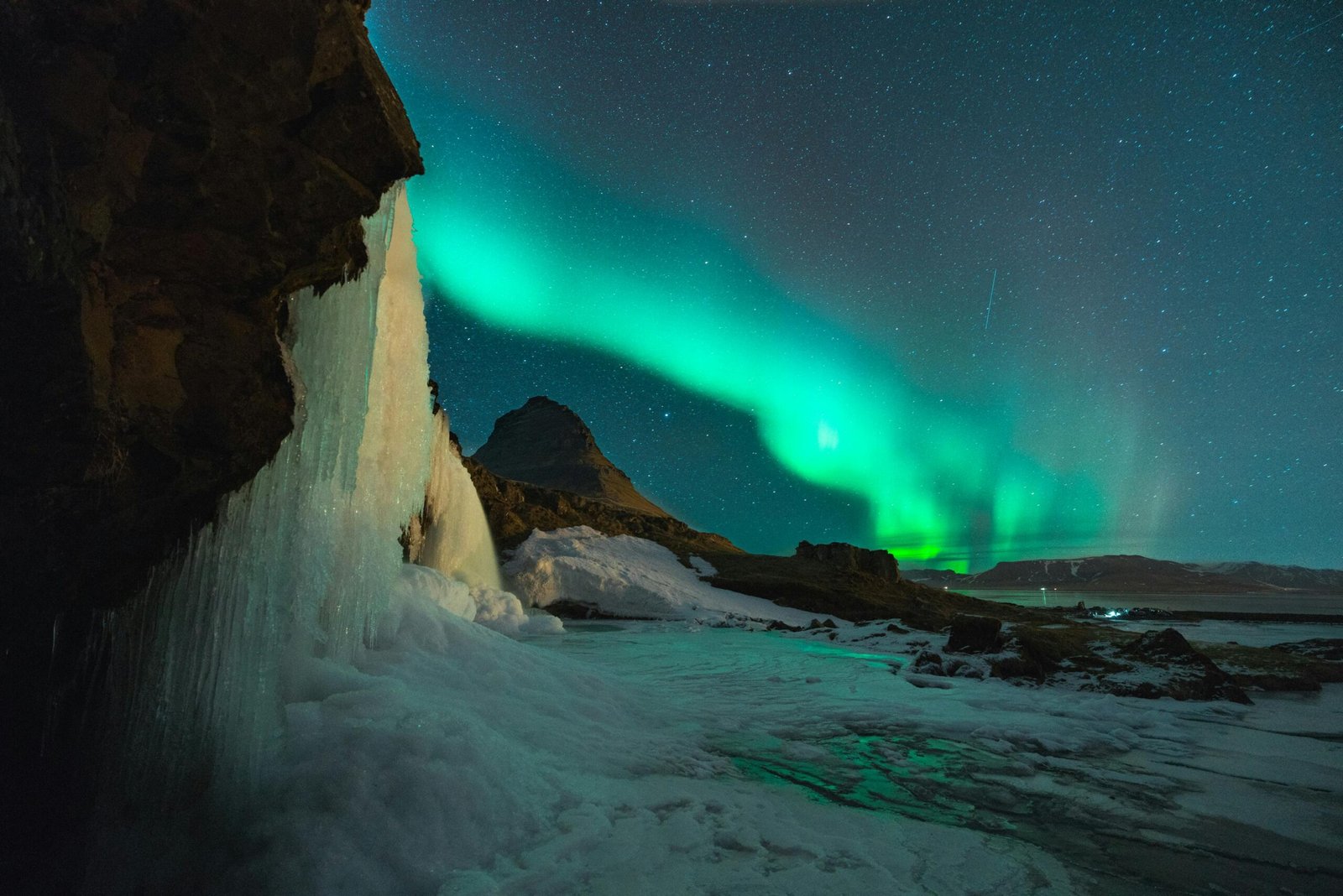
When is the Best Time to Travel to Iceland for the Northern Lights?
Are you dreaming of watching the sky dance with color? Figuring out the best time to travel to Iceland for northern lights is the first step to making that dream a reality. This natural wonder, also known as the Aurora Borealis, is a top reason visitors flock to Iceland. However, seeing it requires careful planning. This guide will help you choose the perfect season for your 2025 trip.
Understanding the Northern Lights in Iceland
First, let’s understand what causes this magical display. The Northern Lights occur when charged particles from the sun collide with gases in Earth’s atmosphere. Consequently, these collisions create beautiful, bright lights that dance across the night sky. For the best viewing, you need two essential things: clear, dark skies and strong solar activity.
Because Iceland is located at a high latitude, it is one of the best places on Earth to witness this phenomenon. The main challenge, therefore, isn’t the location but the timing and the weather.
The Absolute Best Time to Travel to Iceland for Northern Lights
The official season for Northern Lights in Iceland runs from September to April. This is because these months offer the full darkness necessary to see the aurora. During the summer, Iceland experiences the Midnight Sun, which means the sky never gets dark enough.
For the absolute highest probability, however, we recommend visiting between October and March. These months provide the longest, darkest nights of the year. As a result, you have a much larger window of opportunity each night to spot the lights.
Month-by-Month Guide to Seeing the Aurora
September & October: The Autumnal Glow
These months are an excellent choice. You get a good balance of daylight hours for sightseeing and dark nights for aurora hunting. Additionally, the weather is often milder than in deep winter. The autumn colors also provide a stunning backdrop for your photos.
November to February: Peak Winter Darkness
This is the heart of the aurora season. The nights are incredibly long, giving you maximum viewing time. Furthermore, the snow-covered landscapes create a truly magical setting. You must, however, be prepared for colder temperatures and potentially challenging road conditions.
March & April: The Spring Farewell
As winter ends, your chances are still very good. March, in particular, often sees a surge in solar activity around the spring equinox. You also benefit from more daylight for other adventures. In April, the nights grow shorter, but the show isn’t over until the end of the month.
Tips for Maximizing Your Chances
Timing your trip is crucial, but other factors can make or break your experience. Therefore, follow these essential tips to increase your odds of seeing the Northern Lights:
- Check the Forecasts: Regularly check both the weather forecast for clear skies and the aurora forecast from the Icelandic Met Office for solar activity levels.
- Escape Light Pollution: Leave Reykjavík and other towns behind. The darker your surroundings, the more vibrant the lights will appear.
- Be Patient: The aurora can be unpredictable. You might need to wait for hours, so dress warmly and bring a hot drink.
- Stay Longer: A short weekend trip might not be enough. We recommend staying for at least five to seven nights to maximize your chances against cloudy weather.
- Join a Tour: Local guides are experts at reading the conditions and know the best secret spots away from the crowds.
Best Tours for a Northern Lights Adventure
Booking a guided tour can significantly improve your chances of seeing the aurora. Guides are experts who track weather and solar activity in real-time. Moreover, they handle all the driving, often in specialized vehicles, so you can relax and enjoy the show.
You can choose from several options. For example, classic bus tours are a budget-friendly choice. Super jeep tours can take you to more remote, off-road locations. Alternatively, a boat tour offers a unique perspective from the water, away from all city lights.
Ready to witness the magic? Explore our curated Northern Lights tours to find the perfect adventure for your 2025 Icelandic journey. We’ll help you create memories that last a lifetime.